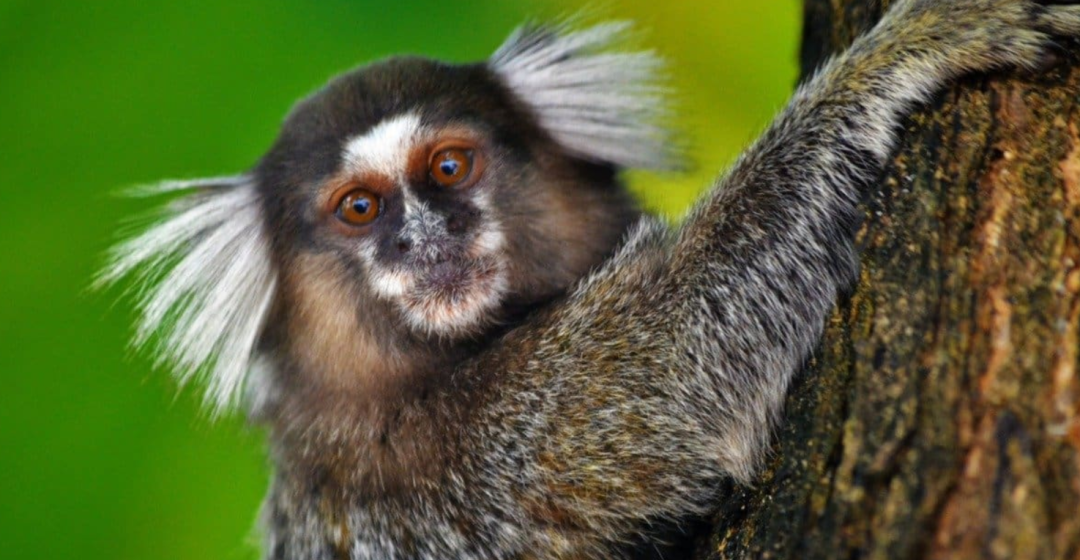Exploring the natural wonders: 15 strange creatures in the Amazon rainforest
In the depths of the Amazon rainforest, there lies a group of natural camouflage masters and survival experts! Imagine a seemingly still withered leaf, but in reality, it is a mysterious Amazon leaf fish swimming on the surface of the water. Its camouflage technique makes it difficult for predators to distinguish its authenticity; And the comical Amazon tapir, with its massive body and comical nose, leisurely hunts for food under the night sky in South America, becoming a giant on land. This is just the prelude, more astonishing and fascinating creatures are poised to emerge& hellip;
Amazon leaf fish, scientific name Monochirhus polyacanthus
Also known as the Leaf Fish, the Amazon Leaf Fish is a master of camouflage. Its body shape and color resemble a withered leaf, with leaf vein like markings, and it usually wanders near the water surface. Insects or small fish are its main food sources.


Amazon tapir, scientific name Tapirus terrestris
The characteristic of the Amazon tapir is its comical nose. It is the largest land mammal in South America, with a bulky body that can weigh up to 700 pounds and grow up to 6 feet long. At night, they will come out of the secret room and mainly eat leaves, grass, fruits, and aquatic plants.


Marmoset, scientific name
The Pygmy marmoset is a small primate with a striking appearance, with a smooth black body and prominent white patches on its face, as if they were born wearing a delicate mask.


Maple leaf turtle, scientific name Chelus fimbriatus
Also known as the Mata turtle, it is a freshwater turtle endemic to the Amazon Basin in South America. They are named after their unique appearance, with a leaf like pattern on the turtle shell resembling the edge of a maple leaf. This natural protective color gives them good concealment in their natural environment.


Glass frog, scientific name Centrolenidae
It is a small amphibian. Their bodies are usually very small, ranging in length from 1.5 to 7 centimeters. The semi transparent abdomen allows for almost visible visceral structures, and this unique transparency is a natural camouflage that is difficult to detect among the fallen leaves on the forest floor.


South American tiger cat, scientific name Leopardus pardis mitis
It is a small feline species that lives in South America. They are known for their unique spotted fur, and this feline species is typically active at night. They mainly feed on small mammals and occasionally prey on birds and insects.


Amazon manatee, scientific name Trichechus inunguis
They are known for their large bodies and gentle temperament, typically measuring up to 3 meters in length and weighing up to 500 kilograms. They are herbivorous animals that mainly feed on aquatic plants. Amazon manatees can hold their breath underwater for up to 6 minutes, spending most of their time foraging or resting underwater.


Musk pheasant, scientific name Opisthocomus hoazin
They can emit a scent similar to musk, which may be used to mark territory or attract mates. The musk pheasant feeds almost entirely on plants and is agile in its movements on forest floors, able to quickly traverse dense vegetation.


Red bellied piranha, scientific name Pygocentrius nattereri
Known for its sharp teeth and fierce hunting habits. They usually have a body length of around 20 centimeters, but their jaws are strong and they have rows of sharp triangular teeth, making them very suitable for biting prey.


Pink toed wolf spider, scientific name Avicularia minatrix
This spider is native to tropical rainforests in South America and has a large body size. Adult individuals can reach a leg span of up to 20 centimeters. They mainly feed on insects and are important predators in rainforest ecosystems.


Golden lion marmoset, scientific name Leontopithecus rosalia
This type of monkey has a small body size, usually around 25 centimeters in length, and its tail is about the same length as its body. They are social animals that typically live in the canopy and feed on fruits, insects, and small vertebrates.


Pink pufferfish, scientific name Inia geo
They are known for their pink skin and round bodies, typically reaching a length of around 2.5 meters. They often appear in groups and mainly feed on fish and aquatic plants. Pink pufferfish may not have very good vision and hearing, but they have highly developed echolocation capabilities and can navigate and search for food in murky river water.


Green Forest Oyster, scientific name Eunetes Murinus
This snake is known for its bright green scales and strong body, with adult individuals typically growing to over 5 meters and weighing up to 100 kilograms. Green forest pythons are top predators with powerful muscles and sharp teeth, capable of tightly entangling and subduing their prey. The green forest oyster has a strong reproductive ability and can lay dozens of eggs at once.


Bullet ant, scientific name Paraponera clavata
This type of ant has a relatively large body size, with a length of about 2.5 centimeters and a black or dark brown body. Its name comes from the intense pain caused by its bite, which is said to feel like being ejected from a blanket. The bite of bullet ants is not only painful, but can also last for hours or even days.


Black spider monkey, scientific name Ateles paniscus
This monkey is named after its long arms and slender body. Its arms are very flexible and can easily swing around trees like spiders. This monkey is a social animal that feeds mainly on fruits, leaves, and flowers, and sometimes also eats insects and small vertebrates.

